Advanced Waterproofing Solutions: Protecting Structures, Enhancing Value, and Ensuring Longevity
Certified Contractor for Waterproofing, Flooring & Structural Integrity Systems
Executive Summary: Protecting Your Assets with Advanced Waterproofing Solutions
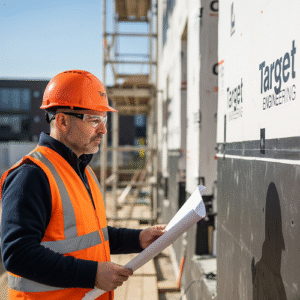
 Target Engineering Specialized Works stands as a preeminent provider of comprehensive, expert-driven waterproofing solutions across Egypt. The company’s authority is immediately established through its distinguished status as a certified applicator, a testament to its rigorous training and endorsement by leading global material manufacturers. This commitment to excellence ensures that all projects adhere to the highest technical, safety, and performance benchmarks, delivering reliable results for waterproofing, flooring, insulation, and structural projects throughout the region
Target Engineering Specialized Works stands as a preeminent provider of comprehensive, expert-driven waterproofing solutions across Egypt. The company’s authority is immediately established through its distinguished status as a certified applicator, a testament to its rigorous training and endorsement by leading global material manufacturers. This commitment to excellence ensures that all projects adhere to the highest technical, safety, and performance benchmarks, delivering reliable results for waterproofing, flooring, insulation, and structural projects throughout the region
At the core of Target Engineering’s offerings is a dedication to safeguarding structural integrity enhancing property value, and fostering healthy, energy–efficient environments for residential, commercial, and industrial assets. The company’s value proposition is multifaceted, built upon a holistic service portfolio that encompasses diverse waterproofing applications, from foundational protection to specialized industrial solutions. This includes the strategic selection and precise application of a wide array of advanced waterproofing materials, meticulously matched to project-specific requirements. An unwavering commitment to quality assurance, backed by rigorous training and certifications from industry-leading manufacturers, underpins every project. This approach ensures long-term durability and cost-effectiveness through preventative measures, all while adhering to sustainable practices.›
A critical observation within the construction and property management sectors reveals a profound and direct correlation between the quality of waterproofing and the long-term durability, longevity, and overall value of a property. When water infiltration is effectively prevented, the structural elements of a building are preserved, significantly extending its operational lifespan. This preservation, in turn, minimizes the need for expensive, reactive repairs and prevents common issues such as mold growth, which can substantially diminish a property’s market appeal and value. Therefore, investing in high-quality waterproofing, especially when performed by certified professionals who ensure proper application and material selection, transforms what might seem like a mere expense into a strategic investment. This proactive measure creates a virtuous cycle, turning a potential liability (water damage) into a long-term asset that maximizes both asset lifespan and financial return. Target Engineering’s services are thus positioned not merely as a solution to immediate problems but as a strategic approach to maximizing asset longevity and financial return, directly aligning with the business objectives of its clients.
Introduction: The Imperative of Expert Waterproofing in Modern Infrastructure
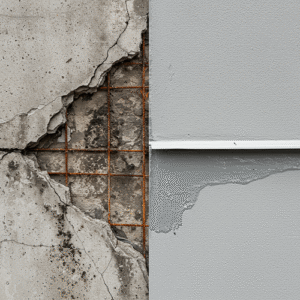
Waterproofing is fundamentally defined as the process of forming an impervious barrier over surfaces of foundations, roofs, walls, and other structural components to prevent water penetration. This critical process renders building surfaces water-resistant and, ideally, entirely waterproof. In the context of modern infrastructure, the necessity of comprehensive waterproofing cannot be overstated, as it addresses a multitude of challenges that can compromise a building’s integrity, safety, and economic viability.
The importance of waterproofing is underscored by several critical factors:
- Structural Integrity: Water intrusion poses a significant threat to a building’s structural integrity. It can lead to rot in wooden elements, corrosion of reinforcing steel, and the cracking and spalling (surface deterioration) of concrete and masonry. Over time, this deterioration compromises the strength and stability of the entire structure. A clear observation from industry experience is that neglecting waterproofing can lead to a compounding cascade of problems. Initial moisture infiltration, if left unaddressed, can cause minor cracks that then allow further water ingress, accelerating material degradation and fostering issues like mold growth. This destructive feedback loop highlights how unaddressed moisture can exponentially increase damage and repair costs, ultimately undermining the building’s foundational stability.
- Health and Safety: Moisture infiltration creates an ideal breeding ground for mold, mildew, and other harmful microorganisms. These biological growths severely degrade indoor air quality, triggering respiratory problems and allergies for occupants. Effective waterproofing is therefore paramount for maintaining a healthy and safe indoor environment, preventing health hazards that can arise from damp conditions.
- Economic Benefits: Proactive waterproofing significantly reduces the need for costly repairs and extensive maintenance throughout a structure’s lifespan. A fundamental principle in construction is that prevention is always more cost-effective than reactive repair. By addressing potential issues before they escalate, substantial long-term cost savings are realized. This strategic approach safeguards long-term assets and financial stability, avoiding the significant expenses associated with rectifying severe water damage.
- Energy Efficiency: Moisture compromises the insulating properties of building materials, leading to heat loss and increased energy consumption for heating and cooling. Proper waterproofing helps maintain optimal insulation performance, contributing to more consistent indoor temperatures and considerable reductions in utility bills.
- Property Value Enhancement: Properties with robust and effective waterproofing solutions are inherently more appealing to potential buyers, as they signal a well-maintained and secure investment. This directly contributes to a higher resale value and positions the property as a more attractive asset in the market.
- Sustainability: Adherence to proper waterproofing practices aligns with sustainable construction principles¹. By preventing water waste and reducing the excess energy required for heating and cooling due to moisture infiltration, waterproofing minimizes a building’s environmental footprint, promoting responsible resource management.
Target Engineering positions itself as an indispensable partner in achieving these critical benefits. Through its certified expertise and advanced, tailored solutions, the company provides foundational protection essential for creating enduring and resilient infrastructure.
Comprehensive Waterproofing Services by Target Engineering
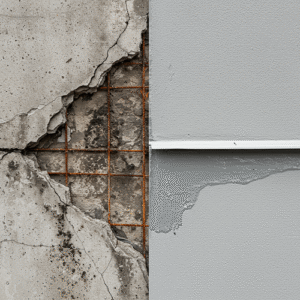 Target Engineering delivers a comprehensive suite of waterproofing services meticulously designed to protect every critical area of a structure from water infiltration. These services address diverse challenges and specific water intrusion points, ensuring robust and lasting protection.
Target Engineering delivers a comprehensive suite of waterproofing services meticulously designed to protect every critical area of a structure from water infiltration. These services address diverse challenges and specific water intrusion points, ensuring robust and lasting protection.
The company’s extensive service portfolio covers key application areas:
- Basement Waterproofing: Basements are particularly vulnerable to water ingress due to hydrostatic pressure¹, foundational cracks, and condensation. Target Engineering offers a range of solutions, including interior sealants and coatings to create barriers against minor seepage, and interior drainage systems such as French drains and sump pumps to manage water that has already entered. For comprehensive protection, exterior waterproofing involving excavation and membrane application is performed to prevent water from reaching the foundation walls.¹
- Roof Waterproofing: Crucial for all roof types, especially flat and concrete roofs common in commercial and industrial buildings, to prevent water pooling and degradation. This service encompasses the application of various liquid membranes and advanced sheet membrane systems tailored to specific roof designs and environmental exposures.
- Foundation Waterproofing: Protecting the very base of the structure is paramount, as the foundation acts as the first line of defense against rainfall, groundwater seepage, and soil shifts. Comprehensive foundation waterproofing prevents moisture from compromising the building’s core stability.¹
- Bathroom & Kitchen Waterproofing: These internal wet areas experience frequent water exposure, making robust waterproofing critical for preventing leaks, maintaining long-term integrity, and inhibiting mold growth.¹

Essential protection for internal wet areas: Bathroom and kitchen waterproofing. - Balconies & Terraces: These exposed surfaces require flexible, durable, and often UV-resistant solutions due to their constant exposure to elements and foot traffic.
- Water Retaining Structures: Specialized waterproofing is essential for structures designed to hold water, such as swimming pools, water tanks, and reservoirs, to ensure containment and preserve their structural integrity.
- Joint Treatment & Structural Repair: Addressing existing cracks, expansion joints, and structural weaknesses is vital. Target Engineering utilizes specialized injection works (employing materials like polyurethane and epoxy) and high-performance sealants to repair and reinforce compromised areas.
- Thermal Insulation Solutions: While distinct from waterproofing, Target Engineering’s certification in thermal insulation highlights an integrated approach to building envelope performance. Effective insulation is often crucial in managing moisture-related issues like condensation, demonstrating a holistic understanding of building physics.
- Industrial Flooring Systems: The company also specializes in the application of robust Epoxy and PLJ Coating Systems for durable and protective flooring and joint treatment in demanding industrial settings.
A key observation is that effective waterproofing necessitates tailored solutions. The diverse array of waterproofing scenarios—from basements and roofs to bathrooms and industrial floors—and the clear delineation that different materials are optimally suited for different applications, strongly indicate that a “one-size-fits-all” approach is ineffective and potentially detrimental. For instance, cementitious solutions are ideal for wet areas like bathrooms, while polyurethane excels on flat roofs, and polyurea is preferred for harsh industrial environments. Target Engineering’s extensive service portfolio and expertise across various material types represent a significant advantage. This allows the company to provide customized solutions, demonstrating a profound understanding of varied project requirements, environmental conditions, and the ability to recommend and implement the optimal method, thereby solidifying its position as a trusted expert and advisor in the field.
Target Engineering offers specialized applications tailored for every structure, whether residential, commercial, or industrial:
- Commercial Waterproofing: Distinguished by its extensive scale and complexity, commercial waterproofing requires specialized application methods, products, and professional expertise for large structures such as hotels, schools, high-rise buildings, and large-scale facilities. This includes specific solutions for parking garages, mechanical equipment rooms, and areas requiring chemical resistance.
- Residential Waterproofing: Focused on safeguarding homes from water damage, mold growth, and maintaining structural integrity, these solutions are tailored to the unique needs of residential properties.
- Industrial Applications: Characterized by harsh operating conditions, potential chemical exposure, and heavy traffic, industrial waterproofing necessitates the use of highly durable, chemical-resistant, and robust materials like polyurea and specialized epoxy coatings.
Another important observation is that waterproofing should be considered an integrated component of overall building envelope performance. The company’s certified applicator list extends beyond mere waterproofing to include “joint treatment,” “flooring,” “insulation,” and “structural repair.” Furthermore, effective waterproofing often relies on “proper drainage systems” and plays a role in preventing “condensation problems”. This suggests that waterproofing is rarely an isolated task but is intricately linked to the overall building envelope and its performance. A failure in one area, such as inadequate drainage, can undermine even the most meticulously applied waterproofing. Target Engineering leverages this understanding to offer a more holistic approach to building protection, demonstrating how waterproofing integrates with and impacts other critical building components and systems. This allows the company to provide more comprehensive, synergistic, and ultimately more reliable solutions, differentiating itself from providers with a narrower focus.
Decoding Waterproofing Materials: A Guide to Superior Protection
Selecting the right waterproofing method and material is a critical decision, contingent upon specific project requirements, the type of structure, the anticipated level of water exposure, and prevailing environmental conditions. Target Engineering’s expertise spans a wide range of advanced materials, each with unique properties, applications, advantages, and disadvantages.
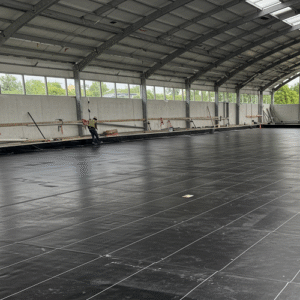
Liquid Applied Membranes (LAMs)
LAMs are monolithic, fully-bonded, liquid-based coatings that cure to form a seamless, rubber-like elastomeric waterproof membrane. They offer high durability, exceptional flexibility, and are particularly suitable for complex shapes and irregular surfaces, minimizing potential leak points. Their application is often quick and easy, and many formulations offer inherent UV resistance.
- Polyurethane (PU) Waterproofing:
- Properties: Renowned for its high flexibility, allowing it to accommodate structural movements and temperature changes without cracking. It creates a durable, seamless layer with excellent adhesion to a wide range of substrates including concrete, metal, and wood. PU is highly resistant to UV radiation, harsh weather conditions, high temperatures, and various chemicals. It also possesses the unique ability to penetrate deep into surfaces, filling even the tiniest cracks.
- Applications: Ideal for flat roofs, balconies, terraces, foundations, parking decks, and industrial floors. Also widely used for sealing cracks and joints in concrete structures.
- Advantages: High flexibility, exceptional durability, seamless application, versatility, superior adhesion, and robust resistance to UV, chemicals, and abrasion.
- Limitations: Generally high cost compared to other materials, requires significant skill and expertise for proper application, has a relatively long curing time, and can emit an unpleasant odor during installation. It also exhibits high sensitivity to moisture during the application phase.
- Epoxy Waterproofing Membrane:
- Properties: A liquid-type waterproof membrane that, upon curing with a hardening agent, forms a watertight, seamless, and exceptionally strong barrier. It boasts excellent water resistance, high tensile strength, and outstanding adhesion to diverse surfaces like concrete, steel, and wood. Epoxy floors are also highly hygienic, resistant to bacteria and germs, and can be made anti-slip with aggregate.
- Applications: Commonly used in basements, garage floors, commercial and industrial kitchens, shower areas, swimming pool decks, and for larger flat roofs, balconies, and underground structures. Also effective for crack and joint sealants, grout, and patching leaks.
- Advantages: Superior water resistance, high tensile strength, excellent adhesion, seamless finish, and relatively fast installation/curing times. Offers high durability, hygiene, and resistance to chemicals and abrasion.
- Limitations: Requires meticulous surface preparation and precise application by specialists; improper installation can lead to costly failures and replacements. Once applied, it can be labor-intensive and expensive to remove or change.
- Acrylic Waterproofing:
- Properties: Water-based coatings made from durable acrylic polymers, known for their UV reflectivity and flexibility. They are breathable, which helps prevent condensation buildup, and impermeable to water.
- Applications: Versatile for basements, crawl spaces, roofs, patios, decks, bathrooms, and kitchens. Best suited for sloped roofs or areas with minimal standing water due to their ponding water limitations.
- Advantages: High durability (up to 8+ years), good UV resistance, wide range of applications, ease of application, breathability, and cost-effectiveness. Often characterized by low VOC emissions.
- Limitations: Not suitable for all surfaces, susceptible to damage by solvents, and performance can be significantly affected by weather conditions (cannot be applied in rainy or humid environments). Exhibits poor resistance to ponding water and typically requires reapplication every 5-10 years. It also does not withstand higher degrees of flexibility or structural movements.
- Polyurea Waterproofing:
- Properties: Pure polyurea is highly insensitive to moisture, boasts a remarkably rapid curing time (forming a film in as little as 50 seconds), and offers exceptional strength. It provides superior resistance to water, chemicals, abrasion, and impact. Uniquely, it can be applied effectively on damp substrates, provided there is no open water.
- Applications: Predominantly used in demanding industrial and commercial settings for construction waterproofing, coatings for truck beds, industrial flooring, tank linings, and sealing concrete structures like swimming pools, water tanks, and retaining walls. Also applied on roofs, foundations, and decks.
- Advantages: Extremely fast curing, virtually no volatile substances (solvent-free), adaptable to damp base conditions, offers super wear resistance, and can be customized with different colors for aesthetic and non-slip finishes. Considered the best waterproof membrane when in its pure form.
- Limitations: High initial cost, requires highly specialized technology and professional expertise for proper application, and its performance may be affected in extremely high or low-temperature environments. “Hybrid” polyurea, which is a mixture with polyurethane, does not possess the same superior mechanical properties as pure polyurea.
Cementitious Waterproofing
- Properties: A simple yet effective method combining cement with concrete waterproofing compounds, applied as a slurry or thick paste. It is cost-effective, uses readily available materials, and is highly resistant to water pressure. It bonds well to concrete and masonry surfaces but generally lacks flexibility.
- Applications: Particularly useful in areas frequently exposed to water, such as bathrooms, kitchens, swimming pools, and water tanks. Also suitable for waterproofing basement walls, foundations, uneven concrete surfaces, and non-changeable dimension objects.
- Advantages: Simple and easy to apply with standard tools, cost-effective, good adhesion to concrete/masonry, and effective against water pressure.
- Limitations: Lacks flexibility, which means it is unable to bridge larger cracks. It is not resistant to heavy traffic and can be vulnerable to premature degradation when exposed to standing water for extended periods. It also exhibits lower chemical resistance compared to other specialized membranes.
Bituminous Waterproofing
- Properties: Utilizes bitumen-based materials available in rolls, sheets, or liquid forms, known for strong adherence and high resistance to water penetration. It is highly impervious to water, offers self-healing properties for small cracks, and is resistant to UV radiation and high temperatures. While flexible, its degree of flexibility varies with polymerization and fiber quality. It is not a breathable membrane. Durability typically ranges from 10 to 15 years.
- Applications: An excellent option for locations requiring enhanced durability and water resistance, commonly used for roofs, basements, industrial areas, foundations, cellars, pavements, bathrooms, kitchens, and concrete slabs.
- Advantages: Strong adherence to surfaces, high resistance to water penetration, and cost-effective for large areas. It is durable, versatile, can self-heal minor cracks, and offers resistance to UV, temperature fluctuations, and some chemicals.
- Limitations: Derived from crude oil, making it less environmentally friendly. It exhibits temperature sensitivity, becoming brittle in cold and soft in high heat, which can affect performance in extreme climates. Requires periodic recoating or repairs, and its application can release unpleasant odors and fumes. It also has limited aesthetic appeal..
Advanced Sheet Membranes
- EPDM (Ethylene Propylene Diene Monomer) Rubber Waterproofing:
- Properties: A synthetic rubber membrane known for excellent UV and ozone resistance, contributing to a very long lifespan (over 50 years with proper maintenance). It is highly flexible, capable of expanding and contracting with temperature fluctuations (-40 to 130°C), resilient to harsh weather conditions and chemicals, and possesses high elasticity, making it suitable for moving structures.
- Applications: Commonly used for green roofs, commercial buildings, industrial applications, general roofing, pond liners, foundations, decks, balconies, landscapes, gardens, tunnels, and bridges.
- Advantages: Exceptional UV and ozone resistance, extended lifespan, minimal maintenance requirements, environmentally friendly, and superior flexibility/elasticity/resilience. Often the lowest price per square foot for flat or low-sloped roofs.
- Limitations: As a thin layer of protection, it can be vulnerable to physical damage. It may also be more prone to mold and mildew buildup compared to other options.
- HDPE (High-Density Polyethylene) Waterproofing Membranes:
- Properties: Available as large sheets, offering a durability of more than 20 years with proper maintenance. These membranes are typically applied to surfaces by heating or using an adhesive bond.
- Applications: Utilized for roofing, basements, foundations, tunnels, bridges, ponds, reservoirs, landfills, and waste management facilities, as well as swimming pools.
- PVC (Polyvinyl Chloride) Roofing Membranes:
- Properties: Highly strong and durable, with a typical lifespan exceeding 20 years and a high minimum breaking strength (over 350 pounds per square inch). Its seams are heat-welded, allowing the roof to expand and contract with the building. PVC is also notably resistant to chemicals and fire. It is recyclable and considered eco-friendly.
- Applications: Primarily used for flat or low-sloped roofs, particularly in commercial buildings like warehouses and manufacturing facilities where chemical resistance is beneficial.
- Advantages: Exceptional strength and durability, long lifespan, resistance to chemicals and fire, and environmental benefits through recyclability.
- Limitations: Generally more expensive upfront than EPDM and TPO. Older PVC roofs (around 10 years) may require more frequent repairs. It is not an ideal choice for cold climates as membranes can become brittle and shatter if not reinforced. PVC can also experience shrinking over time, potentially leading to leaks, and repairs can be challenging due to compatibility issues with different formulations. Re-roofing typically requires complete removal of the old roof, adding to cost and labor.
- TPO (Thermoplastic Polyolefin) Roofing Membranes:
- Properties: Offers excellent resistance to ozone, ultraviolet rays, and certain chemical exposures. It is highly reflective of heat radiation (outperforming EPDM in this aspect), and resists mold growth, dirt accumulation, tears, impacts, and punctures. TPO can be heat-welded for secure seams.
- Applications: Primarily used for flat or low-sloped roofs.
- Advantages: Good overall resistance to environmental factors and physical damage, superior heat reflectivity, resistance to mold/dirt/tears, and ease of maintenance. Offers versatile installation options (adhesive, fastened, heat welded) and is a cost-effective choice.
- Limitations: While heat welding is a benefit, it requires a very high-quality installation to ensure long-term integrity. Some formulations may not last much beyond the 10-year mark, and as a newer product on the market, it has a shorter proven track record compared to EPDM or PVC.
A significant observation from this analysis is that the “best” waterproofing material is inherently context-dependent. While certain materials may be highlighted for specific superior properties (e.g., pure polyurea for its waterproofing capabilities , or polyurethane for concrete surfaces ), a comprehensive review consistently demonstrates that each material possesses a unique set of advantages and limitations, making it optimally suited for particular applications and environmental conditions. For example, acrylic is cost-effective but struggles with ponding water, whereas silicone performs exceptionally well in wet environments. Cementitious solutions are simple to apply but lack flexibility. This intricate interplay of properties and applications strongly indicates that there is no universal “best” waterproofing material; rather, optimal selection is a complex, project-specific decision. This reinforces Target Engineering’s value proposition, which extends beyond simply offering a wide range of materials to precisely knowing which one to recommend and apply where. The company’s expertise in conducting thorough site assessments, analyzing factors like climate, substrate type, expected water exposure, and budget , allows it to recommend the most effective and efficient solution, thereby solidifying its role as a trusted advisor, not just a contractor.
Furthermore, discussions around various materials often reveal inherent trade-offs between initial investment and long-term durability or maintenance requirements. For instance, PVC might have a higher upfront cost but often boasts a longer lifespan than TPO. Polyurethane is noted for its high cost but also for its exceptional durability. This pattern suggests that clients are frequently faced with decisions that weigh immediate budgetary constraints against the total cost of ownership over the structure’s lifecycle, including future repairs and replacements. Target Engineering strategically frames its material recommendations not solely on technical suitability but also on providing the best long-term value and lowest lifecycle cost for the client’s investment. By educating clients on these trade-offs, Target Engineering demonstrates its commitment to financial prudence and sustainable solutions, aligning with the broader benefit of time and cost savings associated with professional services. This approach elevates the conversation beyond mere product features to strategic financial planning for clients.
Comparative Analysis of Key Waterproofing Materials
The Mark of Excellence: Target Engineering’s Certified Applicator Advantage
Target Engineering proudly operates as a certified applicator, a distinction earned through rigorous training and endorsement by leading global material manufacturers. This certification is a testament to the company’s unwavering adherence to stringent technical, safety, and performance benchmarks in the application of specialized waterproofing products. This commitment to certified excellence translates directly into profound advantages for clients.
Choosing a certified applicator like Target Engineering offers significant benefits:
- Unparalleled Expertise and Experience: Certified contractors possess in-depth knowledge, specialized skills, and extensive experience across various building materials, construction techniques, and complex waterproofing solutions. They receive specific, comprehensive training directly from manufacturers on their product lines, ensuring optimal application and a deep understanding of product nuances.
- Access to High-Quality Materials and Equipment: Professional, certified services exclusively utilize high-quality, manufacturer-specified materials and state-of-the-art equipment designed to withstand extreme conditions and deliver lasting performance. This ensures that the materials used are precisely what the manufacturer intended for maximum efficacy.
- Robust Warranty Assurance: Manufacturer certification is frequently a mandatory prerequisite for qualifying for comprehensive product and system warranties. This provides clients with invaluable peace of mind, knowing their investment is protected against unforeseen issues and potential failures. A critical observation here is that manufacturer certification serves as a powerful proxy for risk mitigation and long-term performance assurance. Manufacturers mandate certification not merely for training, but because poor installation can lead to warranty problems, damage a product’s reputation, and even result in costly lawsuits. This establishes a clear causal link: certification ensures correct application, which in turn guarantees product performance, validates warranties, and ultimately mitigates significant financial and reputational risks for both the manufacturer and, crucially, the end client. It represents a systemic approach to quality control, offering robust assurance of product efficacy and comprehensive warranty protection.
- Significant Time and Cost Savings: Professional, certified application ensures efficient project completion, mitigates the risks of costly DIY mistakes, and provides durable, long-lasting solutions that prevent future expensive repairs. The initial investment in certified professionals often yields substantial savings over the lifecycle of the structure.
- Compliance with Industry Regulations: Certified professionals possess a thorough understanding of and adhere strictly to local building codes, industry standards, and regulatory requirements, ensuring legal compliance and project integrity.
- Enhanced Credibility and Trust: Certification serves as a powerful trust signal, significantly enhancing the contractor’s credibility and distinguishing them from less qualified competitors. It assures clients of a contractor’s knowledge and commitment to quality, helping to close sales and build lasting relationships.
- Reduced Risk of Application Failure: Proper application by certified installers drastically minimizes common issues such as poor adhesion, blistering, delamination, and inadequate coverage, which are frequent causes of waterproofing system failure.
The dynamic nature of waterproofing expertise is another important consideration. The requirement for continuing education credits to maintain certification and the emphasis on learning the latest technology demonstrate that the waterproofing industry is not static. New materials, application techniques, and innovative solutions are constantly evolving. Therefore, certified applicators are not merely trained once; they are part of an ongoing ecosystem of knowledge transfer and skill refinement. This ensures they remain at the forefront of industry advancements. This commitment to continuous learning and technological adoption ensures that clients benefit from the most effective, efficient, and modern waterproofing solutions available, reinforcing Target Engineering’s expert-level positioning and long-term reliability.
Target Engineering’s Certified Applicators and Their Expertise
Target Engineering’s extensive network of certifications from leading global manufacturers underscores its commitment to delivering superior waterproofing solutions. These partnerships ensure access to the latest materials and application techniques, backed by the highest industry standards.
The presence of well-known, reputable brand names like Sika, Mapei, Krypton Chemical and Master Builders Solutions associated with Target Engineering serves as a powerful third-party endorsement and trust signal. This immediately conveys that Target Engineering is not just a local contractor but a company operating at international standards, endorsed by leading material innovators. This verifiable proof of extensive partnerships is a critical factor in attracting and securing high-value projects, as it visibly demonstrates Target Engineering’s commitment to quality, adherence to industry-leading standards, and access to the best materials and technologies.
Ensuring Lasting Protection: Best Practices in Waterproofing Installation and Maintenance
Achieving truly lasting waterproofing protection requires adherence to a stringent set of best practices throughout the installation process and a commitment to ongoing maintenance. Even the most advanced materials will fail if not applied correctly or maintained properly.
Critical Steps for Flawless Application
- Meticulous Surface Preparation: This is the foundational step for any successful waterproofing project. Surfaces must be thoroughly cleaned to remove all dirt, dust, debris, and loose materials. Any existing cracks, holes, or irregularities in the substrate must be meticulously repaired and smoothed out prior to application. Crucially, the surface must be completely dry before any material application, as trapped moisture can lead to blistering or delamination of the membrane. Inadequate preparation is consistently identified as a leading cause of waterproofing failure.
- Correct Product Selection: As previously discussed, the optimal waterproofing product depends on various factors specific to the project. Expert consultation is essential to determine the best material for specific needs, considering climate, substrate type, expected water exposure, and budget.
- Strict Adherence to Manufacturer Instructions: Following the manufacturer’s precise guidelines for mixing, application thickness, and curing times is paramount. Deviations from these specifications can severely compromise the material’s performance and, critically, invalidate warranties.
- Even and Consistent Application: Waterproofing materials must be applied uniformly and at the specified thickness across the entire surface to ensure a continuous, impervious barrier and prevent weak spots that could lead to leaks.
- Precise Detailing of Joints and Penetrations: Areas around pipes, vents, drains, and structural joints are inherently common weak points in any waterproofing system. Special attention, including the use of compatible sealants and detailing membranes, is required to create a tight, watertight seal around all penetrations and transitions.
- Proper Overlapping of Membranes: For sheet-applied membranes, sufficient overlap (typically 3-6 inches) between sheets is critical to ensure a continuous and watertight seal, preventing water ingress at seams.
- Adequate Curing and Protection: Newly applied waterproofing materials require specific curing times to achieve their full strength and effectiveness. During this critical period, they must be diligently protected from foot traffic, subsequent construction activities, and adverse weather conditions to prevent damage.
- Integrated Drainage Systems: Even the most robust waterproofing system can fail if water is allowed to pool against surfaces for extended periods. Implementing proper drainage systems, including adequate slopes, gutters, drains, French drains, and sump pumps, is crucial for effectively managing and redirecting water away from the structure’s foundation.
A significant observation from industry experience is that the “human factor” is often the primary determinant of waterproofing success. While the quality of waterproofing materials is undeniably important, a recurring theme across multiple analyses is that “poor installation,” “inadequate surface preparation,” “incorrect product selection,” and “negligent maintenance” are the most frequent causes of waterproofing failure. It has been explicitly stated that “the quality of waterproofing is almost entirely dependent on the skill of the applicator”. This establishes a clear causal link: even the most advanced materials will fail if not applied correctly or maintained properly. The expertise, diligence, and adherence to specifications by the installation team are paramount. This observation strongly reinforces Target Engineering’s professional advantage, as its certified applicators are trained to mitigate the biggest risks associated with waterproofing projects: human error, lack of specialized knowledge, and insufficient attention to detail. This positions Target Engineering as the safer, more dependable choice for clients.
Addressing Common Waterproofing Challenges Proactively
Understanding and proactively addressing common waterproofing issues is key to long-term success:
- Poor Installation: This is one of the most frequent problems. It is largely mitigated by hiring experienced, certified waterproofing professionals who adhere to industry best practices.
- Membrane Punctures or Tears: Damage can occur during installation or subsequent construction activities. Careful handling and protecting the membrane once in place are essential. Regular inspections can help detect and repair any damage early.
- Inadequate Drainage: A foundational error that leads to water pooling against structures. Ensuring proper drainage systems are designed, installed, and maintained is critical.
- Expansion and Contraction Issues: Buildings naturally move with temperature changes, stressing waterproofing systems. Using flexible waterproofing materials and incorporating proper expansion joints can accommodate this movement without compromising the waterproof barrier.
- UV Degradation: Some waterproofing materials can degrade with prolonged sunlight exposure. For exposed areas, using UV-resistant products or applying protective topcoats is necessary to extend system life.
- Condensation Problems: What appears to be a leak might actually be a condensation issue. Ensuring proper ventilation and insulation, and potentially installing vapor barriers, can minimize this problem.
The Importance of Ongoing Care for Longevity
Waterproofing should be viewed as a continuous lifecycle process, not a one-time transaction. The integrity of a structure’s waterproofing is not static post-installation but requires continuous monitoring and care to ensure long-term performance. Neglecting this ongoing maintenance can lead to premature failure, negating the initial investment.
- Regular Inspection and Maintenance: Even well-installed systems require periodic checks. Implementing a regular inspection and maintenance schedule is essential to identify and address minor issues early, preventing them from escalating into significant damage.
- Routine Cleaning: Keeping waterproofed surfaces clean and free from debris, which can impede drainage or degrade materials, is vital for maintaining performance.
- Timely Reapplication: Certain waterproofing materials, such as acrylics, have a finite lifespan and may require recoating or reapplication over time to maintain their effectiveness.
This perspective allows Target Engineering to offer comprehensive post-installation support, such as maintenance contracts, regular inspection services, or expert advice on long-term care plans. This not only creates potential recurring revenue streams but also solidifies client relationships by demonstrating a commitment to the enduring performance of their waterproofing solutions, positioning them as a long-term partner in asset preservation.
Innovating for Tomorrow: Future Trends in Waterproofing Technology (2025 and Beyond)
The waterproofing market is experiencing significant growth, primarily driven by the increasing global demand for durable and resilient structures. This demand is intensified by the rising frequency of extreme weather events and a growing prioritization of waterproof and weatherproof solutions across construction, infrastructure, and manufacturing sectors. Advancements in material science, engineering, and construction techniques are continuously fueling innovation in waterproofing technologies, shaping the future of building protection.
Key trends and innovations shaping the waterproofing industry include:
- Eco-Friendly Waterproofing Products: A prominent and accelerating trend involves the development and adoption of sustainable products. These solutions utilize non-toxic materials and environmentally conscious manufacturing processes, aiming to minimize ecological impact while ensuring effective waterproofing. This also contributes to healthier indoor air quality, aligning with the broader “green building trend”. This indicates that sustainability is evolving into a core demand, not just a niche preference. Clients are increasingly evaluating solutions not just on performance and cost, but also on their environmental footprint and contribution to sustainability goals.
- Advanced Membrane Systems: Significant improvements are being seen in modern membrane systems, making them more flexible, durable, and easier to apply. A groundbreaking innovation is the emergence of self-healing membranes. These membranes incorporate embedded polymers that automatically react to damage, allowing them to repair small cracks or punctures autonomously. The benefits include enhanced durability and a reduced need for frequent maintenance and repairs, directly addressing issues like membrane punctures or tears.
- Smart Waterproofing Solutions: The integration of waterproofing systems with smart home and building technologies is a transformative trend. These systems leverage sensors and IoT (Internet of Things) technology to continuously monitor moisture levels and detect potential leaks in real-time, often before they escalate into major issues. They can send instant alerts to smartphones or building management systems. Benefits include early detection of problems, real-time status updates, and remote monitoring capabilities, preventing extensive damage. This technological leap fundamentally transforms waterproofing from a reactive, repair-centric model to a proactive, continuously monitored, and potentially self-correcting prevention system. The clear relationship is that advanced technology enables earlier detection and even autonomous repair, significantly reducing the likelihood and severity of future water damage.
- High-Performance Sealants: The latest sealant formulations are engineered to provide superior adhesion and flexibility, adapting seamlessly to various surfaces and environmental conditions. New advancements offer enhanced resistance to extreme temperatures and UV exposure, ensuring prolonged protection and effectiveness.
- Enhanced Drainage Systems: Innovations in drainage include improved designs and materials, such as perforated pipes with advanced filtration capabilities and modular drainage solutions. These systems can be easily customized to fit diverse property layouts, ensuring more effective water management and redirection away from foundations.
- Advanced Waterproofing Coatings: The field of waterproofing coatings is advancing rapidly with the development of nanotechnology. This leads to coatings that offer superior water resistance, enhanced durability, and improved protective qualities.
Target Engineering maintains a proactive stance in the industry. The company is committed to continuously researching, evaluating, and adopting these cutting-edge technologies and sustainable practices. This ensures that clients benefit from the most innovative and future-proof waterproofing solutions available. By embracing these advancements, Target Engineering positions itself not just as a provider of physical barriers, but as an innovator offering intelligent, continuously protected, and resilient building systems. This appeals to clients seeking long-term, low-maintenance asset management solutions and establishes Target Engineering as a leader shaping the future of the industry. Furthermore, by actively promoting eco-friendly materials and energy-saving benefits , Target Engineering aligns with the evolving demand for sustainability, appealing to a wider market segment and enhancing its brand reputation, especially for large commercial and industrial projects with environmental, social, and governance (ESG) objectives.
Choose Target Engineering: Your Trusted Partner for Unrivaled Waterproofing
Target Engineering stands as the premier choice for comprehensive waterproofing solutions, built upon a foundation of core strengths and unique selling propositions that set it apart in the industry.
The company’s value proposition is clear:
- Comprehensive Expertise: Target Engineering possesses an unparalleled ability to deliver all types of waterproofing services across diverse sectors, including residential, commercial, and industrial, ensuring a tailored solution for every specific need.
- Unrivaled Quality Assurance: A steadfast commitment to superior quality is rigorously guaranteed by Target Engineering’s certified applicator status and strategic partnerships with leading global manufacturers. This ensures adherence to the highest industry standards, providing clients with peace of mind.
- Tailored Solutions: Target Engineering’s distinctive approach involves providing customized waterproofing solutions, founded on an in-depth understanding of various materials and precise alignment with project-specific requirements, climate, and substrate conditions.
- Exceptional Long-Term Value: The focus is on delivering solutions that provide enduring durability, significantly reduce future maintenance costs, enhance overall property value, and contribute to energy efficiency, transforming initial investment into lasting asset protection.
- Pioneering Innovation: Target Engineering demonstrates a proactive commitment to exploring, adopting, and implementing cutting-edge technologies and sustainable practices, positioning the company at the forefront of the waterproofing industry’s evolution.
- Local Authority and Trust: With an established reputation as a leading and trusted waterproofing expert within Egypt , Target Engineering offers localized understanding, responsive support, and a deep commitment to the region’s infrastructure needs.
For expert consultation, detailed project quotes, or to learn more about advanced waterproofing services, contact Target Engineering today. The company leverages trust signals such as positive customer reviews, compelling testimonials, and the robust backing of its manufacturer certifications, all of which underscore its commitment to excellence. Take the next step towards securing your property with unrivaled protection.
Conclusion: Building Resilience, Ensuring Value
Expert waterproofing is not merely an option but an indispensable, strategic investment for the longevity, safety, and value of any structure, regardless of its type or scale. The comprehensive analysis presented herein underscores that effective waterproofing is a critical defense against water damage, which can otherwise lead to severe structural degradation, health hazards, and significant financial burdens over time.
Target Engineering’s unwavering commitment to delivering superior, long-lasting, and reliable waterproofing solutions ensures that valuable assets are effectively protected, their market value is significantly enhanced, and clients are provided with ultimate peace of mind. By integrating advanced materials, adhering to rigorous installation best practices, and leveraging its certified applicator status, Target Engineering mitigates risks and ensures the enduring performance of every project.
Looking ahead, the landscape of waterproofing technology continues to evolve, driven by demands for greater durability, efficiency, and sustainability. Target Engineering remains at the forefront of this evolution, continuously embracing innovative solutions like self-healing membranes and smart monitoring systems. This forward-thinking approach reaffirms Target Engineering’s pivotal role in driving and shaping the future of resilient infrastructure, ensuring that properties are not just waterproofed for today, but fortified for generations to come.
Contact Our Regional Engineering Teams
UAE Operations
Dar Al-Salam Bldg., Al-Danah, Abu Dhabi
+971 506 330 462 | uae@targetsw-eg.com
Services: Fosroc flooring, Modern Waterproofing systems
Egypt Headquarters
48 El-Horreya St., Heliopolis, Cairo
+202 2417 8704 | admin@targetsw-eg.com
Services: Sika joint treatment, Master Builders fireproofing
Morocco Branch
IMM. 402 ALLIANCE DARNA TRANCHE 2, Kenitra
+212 615 068021 | maroc@targetsw-eg.com
Services: Krypton epoxy floors, Bitunil membranes
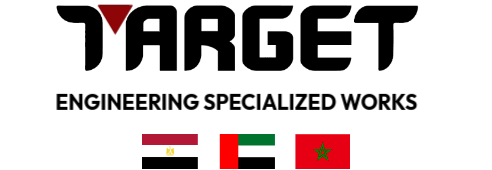
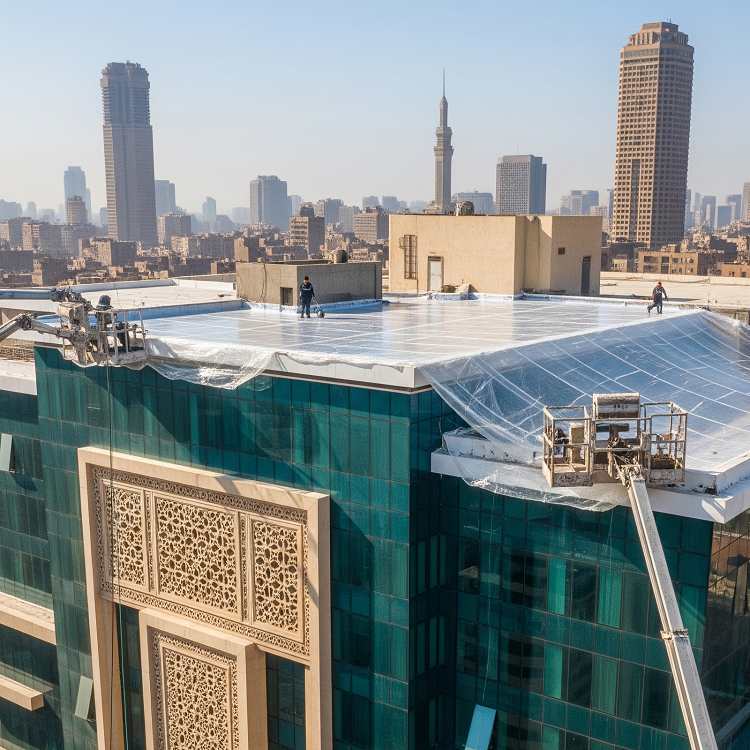
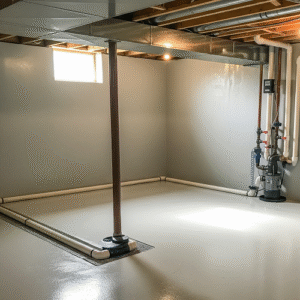
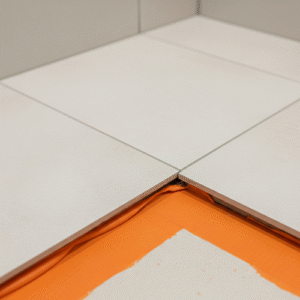
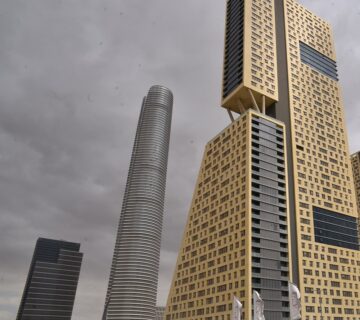
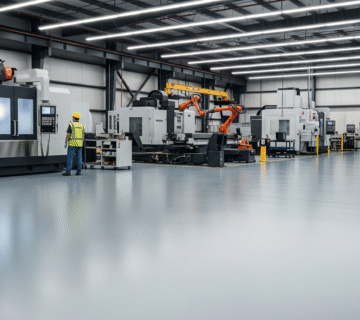
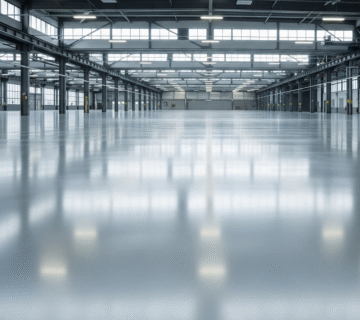
No comment